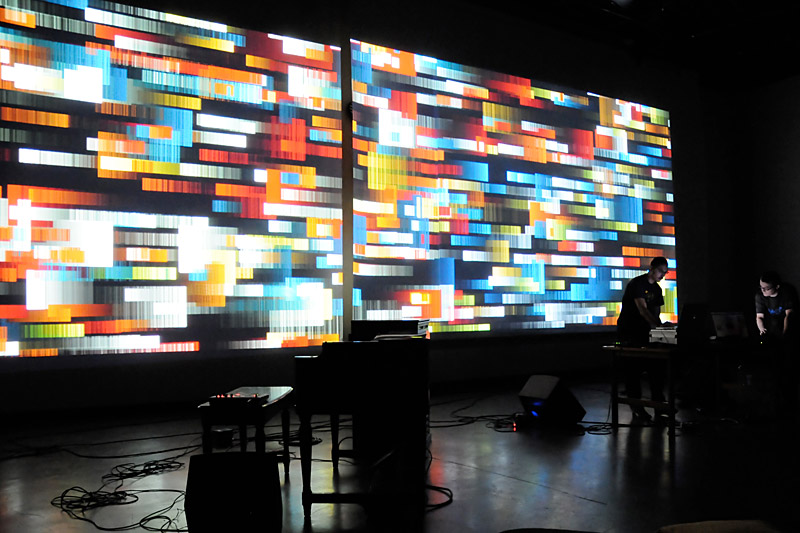
Generative & Algorithmic Art, Leonardo Electronic Almanac
Senior Editors for this issue: Lanfranco Aceti, Meredith Hoy, and Kris Paulsen.
In his essay “What is Generative Art? Complexity Theory as a Context for Art Theory,” Philip Galanter provocatively suggests that “generative art may be as old as art itself.” [1] The programmatic, mathematical patterns that appear in Islamic tile work, Tibetan mandalas, and textiles from around the globe (and particularly from Jacquard’s early 19th century punch card loom) all exhibit the qualities of generative art: they are produced by preset instructions or procedural rules that dictate the forms and structures they might take. Defining a generative mode of production in its most general terms, Galanter writes, “Generative art refers to any art practice where the artist uses a system, such as a set of natural language rules, a computer program, a machine, or other procedural invention, which is set into motion with some degree of autonomy contributing to or resulting in a completed work of art.” [2] Depending on the technology implemented by the artist and the material form of the finished artwork, there can exist wide variations in the degree of the system’s autonomy, the impact of artistic intention and influence, and the complexity or predictability of the system used to generate the artwork. A technology can be as simple as a written set of natural language instructions resulting in a wall drawing in graphite or as complex as a string of computationally executable code that manifests in a spectacular array of screen-based graphics. The degree of artistic intervention in the final product effects the extent to which a system can be defined as functioning autonomously; in a true generative system, the rules of the program are produced by the artist, set into motion, and then left to develop, often in ways that could not be predicted by the artist due to the incursion of random variables.
This special issue of Leonardo Electronic Almanac seeks to investigate the long history of generative and algorithmic art, from the historical predecessors mentioned above, to contemporary computational artworks. We invite proposals for articles examining generative and algorithmic art practices from the ancient world to the present day, and artists’ projects and pictorial essays engaging with these procedures and structures. Submissions might investigate issues of authorial control, predictability and unpredictability, chance and “aleatoric” methods of art making, or might propose theoretical and philosophical explorations of the concepts of hardware and software, the materiality of generative systems, video feedback as a generative system, the relationship between generative art and cinematic practices, or the historically expansive and ever expanding range of technologies capable of executing generative systems.
[1] Philip Galanter, “What is Generative Art? Complexity Theory as a Context for Art Theory,” in Generative Art Proceedings, 2003. http://www.generativeart.com/
[2] Ibid.
Please send proposals to: info@leoalmanac.org
a) Subject heading: Generative and Algorithmic Art
b) Deadline for submission of full article for consideration: September 15, 2012
c) 2 images at 72 dpi resolution no larger than 700pixels width for artists
d) Links to previous work, videos or personal sites
Our publication formats allow for full-color throughout and we encourage rich pictorial content where relevant and possible. Note however that all material submitted must be copyright cleared (or due diligence must be evidenced). For online publication a wide variety of media content may be considered (animation, mp3, flash, java, etc…)
• For scholarly papers please submit the final paper ready for peer review. Your contribution will be reviewed by at least two members of the LEA board and revisions may be requested subject to review.
• For themed and pictorial essays please submit an abstract or outline for editorial consideration and further discussion.
• Please keep your news, announcements and hyperlinks brief and focused – include contact details and a link to an external site where relevant. We reserve the right to sub-edit your submissions in order to comply with LEA policies and formats. Where material is time-sensitive please include both embargo and expiry dates.
• In all cases specify special system considerations where these are necessary (platform, codecs, plug-ins, etc…)
For further information or image submission contact: Ozden.Sahin@leoalmanac.org
We look forward to hearing from you!
